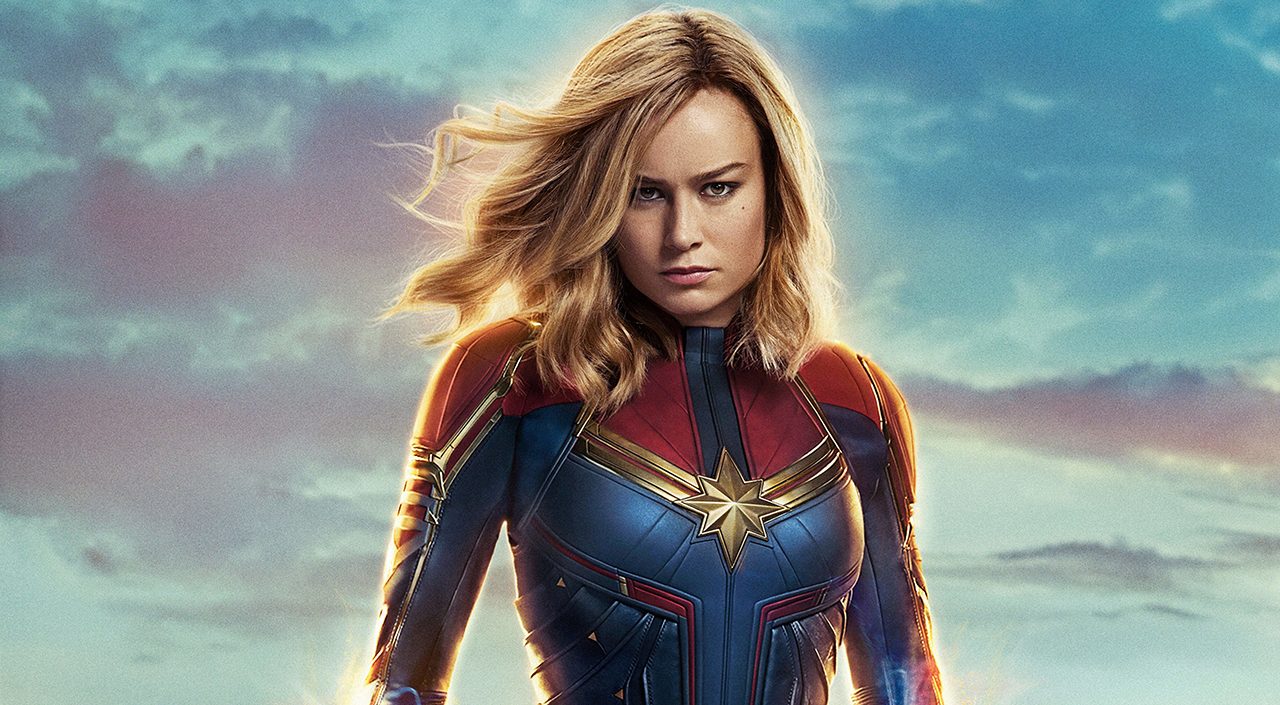Despite a healthy stable of mighty superheroes already headlining their own big screen franchises within the ever-expanding Marvel Studios catalogue, it’s taken just over a decade of Marvel Cinematic Universe history to finally launch a fully female-led movie. There have certainly been plenty of kick-ass female heroes filling several of the MCU’s supporting movie roles, including Scarlett Johnasson’s Black Widow, Elizabeth Olsen’s Scarlet Witch and Zoe Saldana’s Gamora, among other examples, and that’s not even including the MCU’s television arm either! Hell, Marvel Television has already launched more than one successful female-led television series set in the MCU, between ABC’s Agent Carter and Netflix’s Jessica Jones!
Finally however, eleven years in, Marvel Studios has released their first entirely female-led superhero movie for the MCU, spearheaded by one of the Marvel Universe’s most powerful women of all, no less! Captain Marvel not only brings its high-powered heroine to the big screen for the first time in history, on top of launching Marvel Studios’ first female-led movie franchise, but also explores a formerly unseen period of time for the MCU, being set entirely in the mid-1990’s. Unfolding within an era long before the Avengers would come together, long before S.H.I.E.L.D. collapsed, and back when Nick Fury had both eyes intact, Captain Marvel delivers a more quaint, almost wholesome new take on the MCU, one drenched in 90’s ‘attitude, while telling a fairly simple origin story that nicely provides some welcome respite from the still-painful final twist of last year’s stellar Avengers: Infinity War.
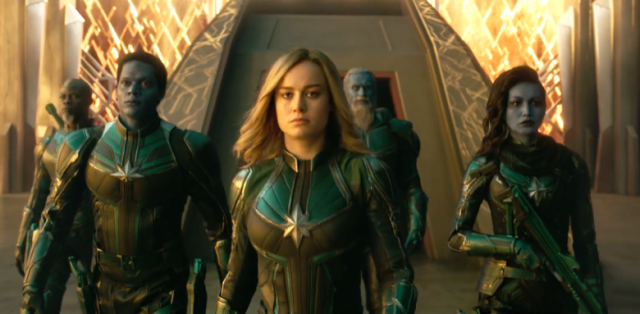
Indeed, thanks to big MCU event movies like the aforementioned Avengers: Infinity War, which Marvel Studios has been releasing with astonishing regularity over the past several years, some may find Captain Marvel to be strangely lacking in the same sort of spectacle. There are spectacular moments here for sure, and Brie Larson’s lead performance as the fledgling Captain Marvel herself carries just the right amount of lovable charm and spunky wit, but Captain Marvel is also a much more modest movie than its larger-than-life title heroine would suggest. This is very much a character piece that largely unfolds on Earth, with the awe-inspiring alien invasion elements and spacefaring destruction picking their moments, and never overstaying their welcome, or even fully making the most of it, to be honest. If you’re in the mood for something a little weird, but still pretty cool, then Captain Marvel will nonetheless satisfy you, even if it’s tough to argue that it feels considerably less exciting to watch than most of the Marvel Studios movies released over the past few years.
As previously mentioned, Brie Larson is well-cast as Captain Marvel, a.k.a. Carol Danvers, an amnesiac military fighter pilot who ends up joining an alien soldier squadron. Some may be annoyed that Carol spends almost the entire movie with memory loss, a lame trope that doesn’t do much to keep Marvel fans on their toes, who are no doubt already well aware of Captain Marvel’s background and identity from Marvel Comics lore, or possibly even a good chunk of Wikipedia research. There is however a key change in the MCU’s origin story for Captain Marvel, which completely ignores the character’s decades-running ‘Ms. Marvel’ identity to skip straight on to her modern ‘Captain Marvel’ persona, which in turn is given a few new added dimensions in this movie, to avoid unintentional similarities to the backstory of DC’s competing spacefaring hero, Green Lantern, namely his most well-known Hal Jordan incarnation.
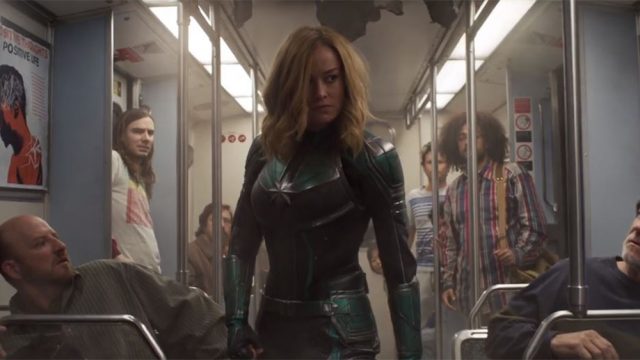
The effort to add new dimensions to Captain Marvel’s character is appreciated, but the changes just won’t be enough to keep Marvel fans guessing, sadly, even if less Marvel-hardened moviegoers may be more forgiving of the sometimes-obvious twists in Carol’s character arc. The other issue on this note is that Carol is in league with the Kree, a zealous, warlike race of blue-skinned aliens first established in 2014 movie, Guardians of the Galaxy, and further fleshed-out for the MCU on long-running Marvel Television series, Agents of S.H.I.E.L.D. Since the MCU has already established that most of the Kree are, well, not too nice at the very least, it becomes all the more blatant that Carol’s alien buddies clearly aren’t on the level, especially with literally both of Guardians of the Galaxy’s central villains, Lee Pace’s Ronan the Accuser and Djimon Hounsou’s Korath the Pursuer, running in Carol’s circles! It might have been cool to show more sympathetic, even-handed takes on the MCU’s Ronan and Korath, but their roles in Captain Marvel are little more than cool Easter eggs, and they might as well have not shown up at all, since neither of them contribute anything of value to the plot, nor to Carol’s journey as a character.
Even Carol’s time with the Kree feels frustratingly under-developed, since she has to be dropped down to Earth to start quickly interacting with other humans, thus allowing her to discover the inevitable truth; That the Kree obviously lied to her about the fact that she’s human, and not Kree. Jude Law’s mentor figure, Yon-Rogg has some decent moments with Carol, but he just doesn’t get enough interaction with her for it to truly feel like any of it matters. Instead, the real personality that Carol shines alongside is Samuel L. Jackson’s decades-younger Nick Fury, now de-aged with CGI, and given both hair and two fully-functioning eyes. Larson and Jackson have clearly become fast friends in the real world, considering their frequent performances in the same projects, and their infectious chemistry really does shine in Captain Marvel, where Fury’s no-nonsense government agent plays well off of Carol’s oblivious drive to get off of Earth. It’s just too bad that Clark Gregg’s similarly de-aged, wet-behind-the-ears 90’s-era Agent Coulson is similarly relegated to a cool bit part for MCU enthusiasts and nothing else, with Coulson finally returning to a Marvel Studios movie role, after spending the past half-decade as the lead character on Agents of S.H.I.E.L.D.
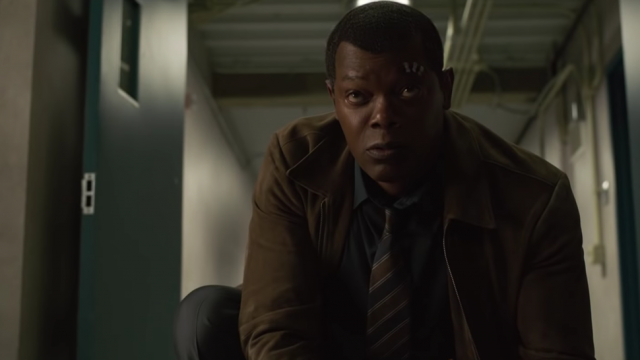
This brings me to the other key alien faction that Captain Marvel features, and it’s a big one in Marvel Universe lore; The Skrulls! Despite it initially appearing as if the Skrulls were off-limits to the MCU, on account of 20th Century Fox possessing much of the movie rights to them, due to their falling under Fox’s cinematic Fantastic Four license (it turns out that only certain specific Skrulls are off-limits to Marvel Studios, due to being frequent enemies of the Fantastic Four), the Skrulls nonetheless make their MCU debut in Captain Marvel. In the case of this movie, the green-skinned alien shapeshifters are headed up by Ben Mendelsohn’s Talos, the main threat to Carol’s Kree faction, which thus threatens to engulf Earth in all-out battle between the Kree and the Skrulls. This is a very cool idea, and one taken directly from the beloved, “Kree-Skrull War” story arc of Marvel Comics lore, but as much as the Skrulls possess the one decent twist that Captain Marvel has to offer, it will be a doozy for a lot of Marvel fans. To preserve the twist, I’ll simply say that this movie contains a very subversive take on the Skrulls, and it probably won’t be to everyone’s liking, despite Mendelsohn at least naturally remaining a clear highlight among the cast.
As much as there are many impressive elements behind Captain Marvel, one of the most noticeable issues with the movie is, sadly, its story execution. There are some inspired ideas in the somewhat patchy script of Captain Marvel, but since the whole movie is based around an insultingly obvious twist, and a few story choices that will likely be controversial to Marvel fans in particular (obviously, I won’t spoil these, but you’ll know them when you see them), it’s tough not to be a bit disappointed with Captain Marvel’s final product. The action and sense of humour are still mostly on point, and the 1990’s setting lends itself to a few undeniably fun and warmly nostalgic moments for Captain Marvel’s adult audience, but some of the writing really isn’t as amusing or clever as it thinks it is, and that’s before considering the fact that Captain Marvel isn’t nearly as graceful nor clever with its themes of female empowerment as DC’s fairly recent Wonder Woman movie was.
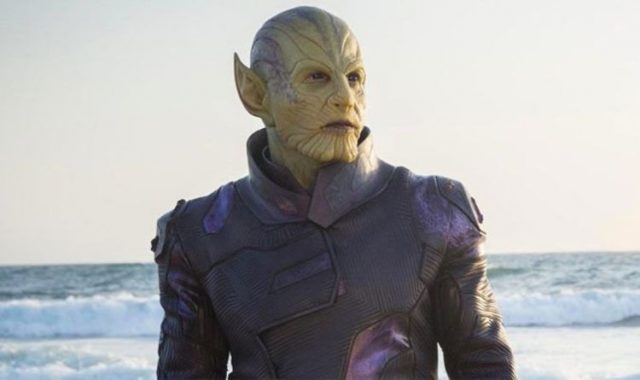
That’s not to say that Captain Marvel doesn’t work as a female empowerment anthem. There are some legitimately inspiring scenes that will uplift the hearts of men as much as they will for women, and more than a few striking bits that are bound to resonate with young girls especially. The problem however is that Captain Marvel’s script does sometimes come off a little self-satisfied, ultimately not carrying the same degree of effortless courage and style that Wonder Woman delivered a couple of years ago. This isn’t helped by the movie’s less effective story moments, which sometimes seem more concerned with subverting expectations than actually providing meaningful canonical contributions to the MCU, particularly the pre-Avengers era of the 1990’s. The story in Captain Marvel is never truly bad at least, but considering the outrageous scale behind both Captain Marvel’s character and the Kree-Skrull War storyline from Marvel Comics lore, this movie just should have been more than it ultimately is, and that’s frustrating.
(NOTE: The spoiler section, when clicked, discusses post-credits scenes, and potential connections to the rest of the Marvel Cinematic Universe. Beware also for a major spoiler from Avengers: Infinity War!)
The second post-credits scene meanwhile is merely a quick gag scene, as Goose, the cat of Carol Danvers’ military mentor, Dr. Wendy Lawson, revealed earlier in the movie to be the MCU’s gender-swapped version of Kree Captain Marvel forerunner, Mar-Vell, vomits up the Tesseract on Nick Fury’s desk, revealing how the Tesseract ended up in S.H.I.E.L.D. custody around the time of The Avengers. Despite speculation that Goose may be a Skrull, mimicking a story turn with Carol Danvers’ cat, Chewie in Marvel Comics lore (which turned out to be a Skrull in disguise), Goose is actually revealed to be a Flerken during the third act of the movie, a dangerous alien race taken directly from Marvel Comics lore, one with intelligence, the ability to swallow any object in an internal black hole-like maw, and vicious tentacles protruding from its mouth when it opens, despite otherwise perfectly resembling a common house cat. In one of the movie’s more anti-climactic turns, Goose is also revealed to be responsible for Nick Fury’s lost eye, which is casually scratched out in a throwaway joke after the climax. It’s one of several moments that Marvel fans especially may be disappointed with, since it feels more subversive for its own sake, rather than truly clever.
The inclusion of the Tesseract is one of several story surprises in Captain Marvel, connecting the movie to the events of The Avengers in particular, as the Tesseract ended up being salvaged by Dr. Lawson/Mar-Vell at some unspecified point, where it was then used in an effort to help shelter civilian Skrulls that were trying to escape the onslaught of the Kree, before ending up with S.H.I.E.L.D. around the time of The Avengers. The Tesseract is also partially revealed to be the inspiration behind the exploded energy core that gives Captain Marvel her powers in the MCU, and it eventually becomes the macguffin that Yon-Rogg and his Kree squad pursue during Captain Marvel’s climax. There are no other MCU Easter eggs or cameos of note in Captain Marvel however, which may be unsurprising, considering that the movie takes place in the mid-1990’s, long before the Avengers and other such heroes would go on to appear on Earth. It is however revealed that the name for The Avengers in the MCU actually did come from Carol Danvers, whose military plane was code-named, “Avenger”, inspiring Nick Fury to coin the name for, “The Avenger Initiative.”
Anna Boden and Ryan Fleck co-direct Captain Marvel, on top of writing the script alongside Guardians of the Galaxy scribe, Nicole Perlman, and frequent female genre movie writer, Geneva Robertson-Dworet. Best known for 2015 dramedy, Mississippi Grind, the double directing act of Boden and Fleck is another unconventional choice for a Marvel Studios blockbuster, and in this case, their directing approach feels like it both hits and misses at the same time, depending on the scene. On the one hand, when Boden and Fleck nail a character moment, they really nail it. In having to deal with a script that can’t quite keep up with the direction however, Boden and Fleck don’t manage to sell some of the drama and suspense, despite working off of a script that they themselves partially rewrote!
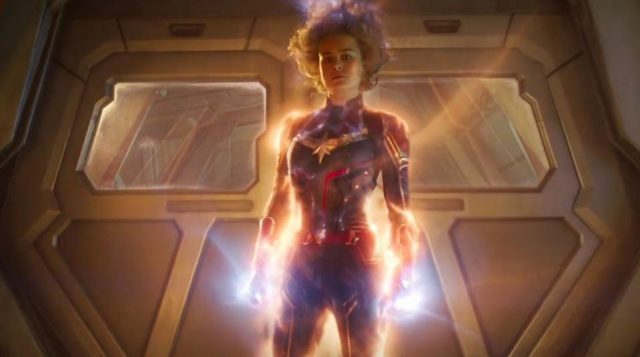
Fortunately, it’s the all-important action scenes that Boden and Fleck consistently nail on every pass. Captain Marvel was allegedly envisioned as a cheeky throwback to over-the-top 1990’s action blockbusters, and that vision does shine through, since the movie does feel both impressive and just a little weird, as Boden and Fleck clearly pitched. There’s a lot of character behind the movie’s presentation at least, even if the set pieces and writing don’t always manage to bring all of the direction together. Still, at least Captain Marvel kicks quite a lot of ass when it wants to, usually when it’s letting fly with its action. The uneven directing does sometimes create dry spots and less interesting stretches though, as you can imagine, and many viewers will likely just be desperate for the next action scene, as soon as the previous one ends, simply to see what kind of action-packed creativity that Boden and Fleck can realize next. In this sense, Captain Marvel definitely didn’t come together quite as exceptionally as it could have, but its direction is at least competent, even if it leaves some untapped potential on the table.
Captain Marvel’s score is composed by Pinar Toprak, a lesser-known composer whose best claim to fame is helping to contribute to the soundtrack of 2017’s Justice League movie. Toprak’s Captain Marvel score, arguably her biggest project to date, manages to be a pretty solid one for the most part, with well-incorporated licensed 90’s music that helps to both enhance the period charm, and beef up the quirky spunk behind some of the direction. Nostalgic 1990’s-era tunes from bands and performers such as No Doubt, TLC and Garbage throughout Captain Marvel’s soundtrack are sure to tickle the movie’s many adult viewers, with the rest of the plucky, yet inspiring score also serving the character of Captain Marvel quite well. There isn’t quite as much iconic musical awesomeness on display as, say, the Guardians of the Galaxy movies, but Captain Marvel’s soundtrack is nonetheless quite energetic and fun.
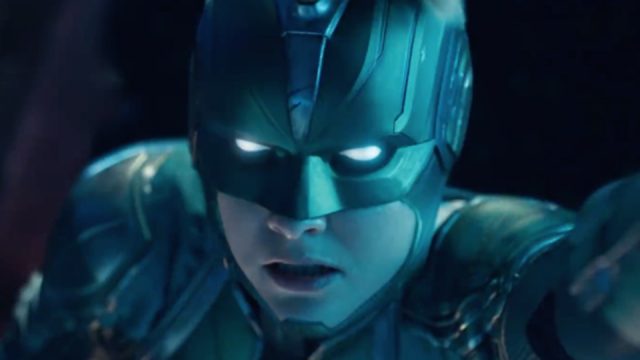
The rest of the sound mixing and audio design is generally pretty great, as one would come to expect from any given Marvel Studios blockbuster. Again, the destruction is not quite as frequent as some Marvel fans may hope, but the handful of moments when Captain Marvel’s power is truly unleashed manage to provide a new level of heroic oomph for the MCU’s do-gooders, particularly in premium formats like IMAX, where several of Captain Marvel’s biggest money shots will feel as if they shake the very theatre! It’s enough to make you wish that Captain Marvel hadn’t weirdly constrained itself to such a tiny scale, left with only a handful of opportunities to truly flex its audio muscle. Still, as with any Marvel Studios movie to date, whatever audio muscle is flexed in Captain Marvel continues to impress, even if not quite on the scale that the titular heroine truly deserves.
It should come as no surprise that Captain Marvel is often visually stunning, like pretty much any Marvel Studios movie before it, with much of its set work and spectacular action sequences leaping off of the screen. Marvel Studios has continually raised the bar for visual excellence on the big screen with each passing offering, and while Captain Marvel’s visual selection pales in comparison to last year’s Black Panther and Avengers: Infinity War (hell, even Ant-Man and the Wasp seemed to have more visual tricks up its sleeve!), it’s still very impressively-produced. The make-up effects behind the Skrulls are arguably the highlight of Captain Marvel’s visual elements, particularly their shapeshifting capabilities, which blur the line between surprisingly human and monstrously alien. Some of the sets on the Kree homeworld, Hala, as well as the world of Annette Bening’s Great Intelligence, are also pretty impressive and very visually distinct, again causing some potential frustration when one considers that most of Captain Marvel is set on plain old Earth.
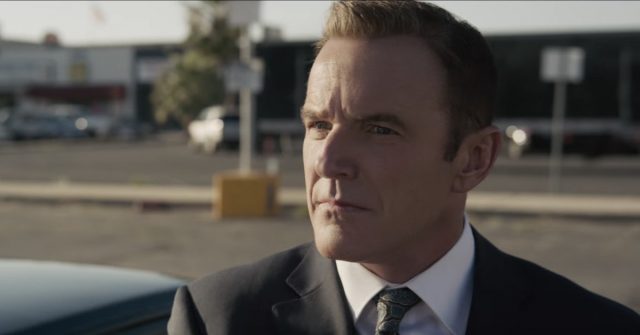
Another surprising visual highlight in Captain Marvel is its 3D presentation, which is remarkably sharp. Again, some of the 3D isn’t all it could have been, considering the surprising amount of time that Captain Marvel has to spend earthbound, but during its action scenes and atmospheric moments, the 3D work wonderfully leaps to life with surprising potency and immersion. Marvel Studios movies have traditionally been a little spotty with their 3D jobs, but Captain Marvel definitely offers one of the better 3D presentations in the Marvel Studios catalogue, nicely adding some improved scale, and more of an eye-popping element to the visual flourishes. You can boost the scale even more in IMAX theatres as well, even if the truly spectacular moments can be frustratingly few and far between at times. When Captain Marvel swings for the fences with its special effects though, it definitely delivers, and I highly recommend at the very least shelling out for a 3D ticket in order to really get the most out of the movie’s visual highlight moments!
Captain Marvel doesn’t make nearly as big of a splash as DC’s competing Wonder Woman did back in 2017, and considering the massive prestige behind the MCU in modern Hollywood, that’s undeniably a let-down. Nonetheless, Captain Marvel still stands as a pretty fun romp, particularly during the moments when it lets fly with its cheeky sense of humour and genuinely superb action scenes. Brie Larson also capably portrays a charming, badass Carol Danvers, an empowered female superhero who does lend herself nicely to a prospective movie franchise, particularly when she’s able to provide a highly entertaining double act with Samuel L. Jackson’s younger Nick Fury. It’s just too bad that not every character in the movie’s script can keep up, since many of the movie’s personalities fail to register to any significant degree, especially on the villains’ side, where Marvel Studios once again seems to be regressing back into the old habit of disappointing, under-developed bad guys, despite almost entirely avoiding that stubborn issue ever since Spider-Man: Homecoming released with a surprisingly great lead villain in mid-2017.
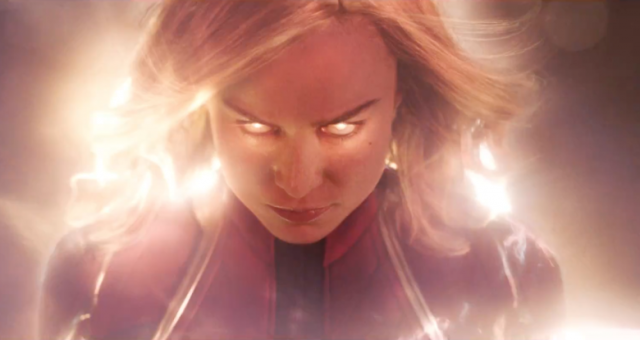
If you’re a Marvel fan, you’ll probably expect more from Captain Marvel than what it ultimately delivers, but Marvel fans and general moviegoers of all ages and genders will still have enough fun with Captain Marvel to satisfy the ticket price, especially if they shell out a few extra dollars for the 3D cut. This year’s upcoming Avengers: Endgame and Spider-Man: Far From Home appear to promise more impressive, memorable MCU additions, but even if it falls a bit beneath Marvel Studios’ usual outstanding quality standard, Captain Marvel still sets up a fairly promising new film series for the MCU, one where the eponymous character can hopefully flourish more in a tighter, more consistent sequel at some point in the future. I’d be hard-pressed to claim that Captain Marvel is good enough to launch a spectacular new initiative for female-led MCU movies, but it is however a decently satisfying period piece for the MCU, even if it does mostly feel like an undemanding appetizer for Avengers: Endgame next month.

